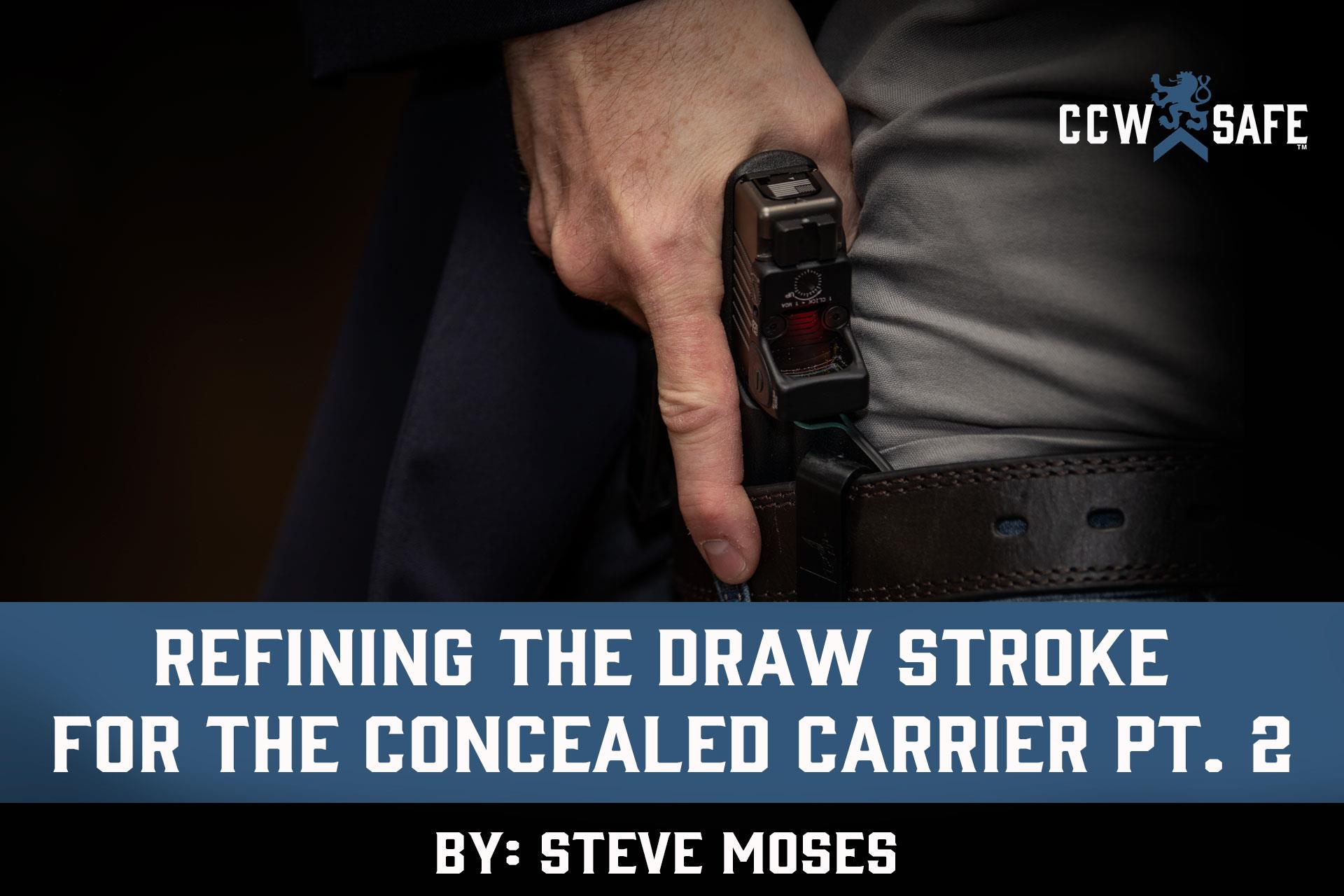
Posted on April 27, 2020
REFINING THE DRAW STROKE FOR THE CONCEALED CARRIER PT.2
REFINING THE DRAW STROKE FOR THE CONCEALED CARRIER PT. 2
Three yards, three rounds, three seconds. According to master defensive firearms instructor Tom Givens, most gunfights in which trained civilians are involved take place at a distance of approximately three to five yards, approximately three and one-half rounds are fired, and no further shooting takes place after approximately three seconds. It is abundantly clear: concealed carriers need to be capable of quickly accessing their handgun and getting it into a firing position quickly enough to put it to good use if confronted by another who represents a legitimate threat to life and limb.
Good technique is that which emphasizes both economy of motion and effort and eliminates unnecessary movements. I knew that Spencer Keepers had spent a lot of time not only refining his draw stroke but that of his students, and believe that he can do a better job than me of articulating what concealed carriers who are interested in increasing their presentation speed could do in order to see improvement. I asked Spencer for tips for concealed carriers who believe like me that the ability to quickly get a concealed handgun into what may be the fight for their life may be critical to their survival.
- Take a basic handgun course from a competent instructor and properly learn the basics of safely drawing the handgun, getting two hands on the grip, and returning the handgun to the holster. Spencer pointed out that it is possible that the draw stroke that such an instructor may teach may not be all that efficient, but that is not necessarily a deal-killer. His take is that it is perfectly acceptable to learn to crawl before one learns to walk and learn to walk before one runs. A good foundational class can go a long way toward developing a quick draw stroke.
- Once the basic draw stroke is established, now is the time to refine it. Concealed carriers should do dry-fire practice in front of a mirror. This provides instant feedback on wasted motions (which is anything that wastes time and does not aid in getting the muzzle of the handgun from Point A, which is in the holster, to Point B, which is aimed directly at the target). The goal is to only move those parts of the body that need to be moved. Examples of unnecessary movements might be dipping the support side shoulder or leaning forward while drawing and then returning to a more upright position to shoot. Concealed carriers might be surprised to find the first time they do this how much their head moves around during the draw stroke. Spencer noted that any unnecessary movement not only wastes time but encourages inconsistency in the draw stroke. NOTE: make sure the handgun is unloaded, there is no ammunition in the same room, and that the wall upon which the mirror is located is backed by a wall made of brick, stone, or some other material that will stop a bullet.
- Dry-fire practices should then be followed by live-fire practice. It is quite common for the smooth draw stroke seen in dry-fire practice to fall apart during initial live-fire practice sessions. Spencer recommends that concealed carriers use an IPhone and tripod (or simply a friend) to film themselves practicing their draw stroke in live-fire mode with the objective being to review it looking for wasted motions. This allows the concealed carrier to make any corrections needed to then eliminate the same. Unless concealed carriers are made aware of any discrepancies between their dry-fire practice draw and their live-fire practice draw they will never be able to fully develop the quick draw stroke that they are seeking.
- Concealed carriers would be well served to find a shooting partner that is better than they are. Concealed carriers can carefully watch their form and then emulate what they do. In many instances the better shooter can often help the concealed carrier improve their draw stroke. Spencer said that concealed carriers are likely to find that their speed improves as a result.
Part Three of this article will go into more detail for concealed carriers interested in developing a faster draw and willing to put in some time making one or more revisions to their present draw stroke.
 |
Steve MosesSteve is a long-time defensive weapons instructor based out of Texas who has trained hundreds of men and women of all ages for more than two decades on how to better prepare to defend themselves and their loved ones. Steve has completed over 80 private-sector and law enforcement-only defensive weapons and tactics classes, and has trained civilian and law-enforcement officers in six states. Moses is a reserve deputy, former member of a multi-precinct Special Response Team, competitive shooter, and martial artist. Steve has written numerous articles for SWAT Magazine and other publications. Steve is a licensed Texas Level 4 Personal Security Officer and Instructor who was Shift Lead on a mega-church security detail for seven years, and has provided close protection for several former foreign Heads of State. He is currently an instructor at Relson Gracie Jiu Jitsu/Krav Maga in Tyler, Texas and Director of Training for Palisade Training Group (www.ptgtrainingllc.com). |